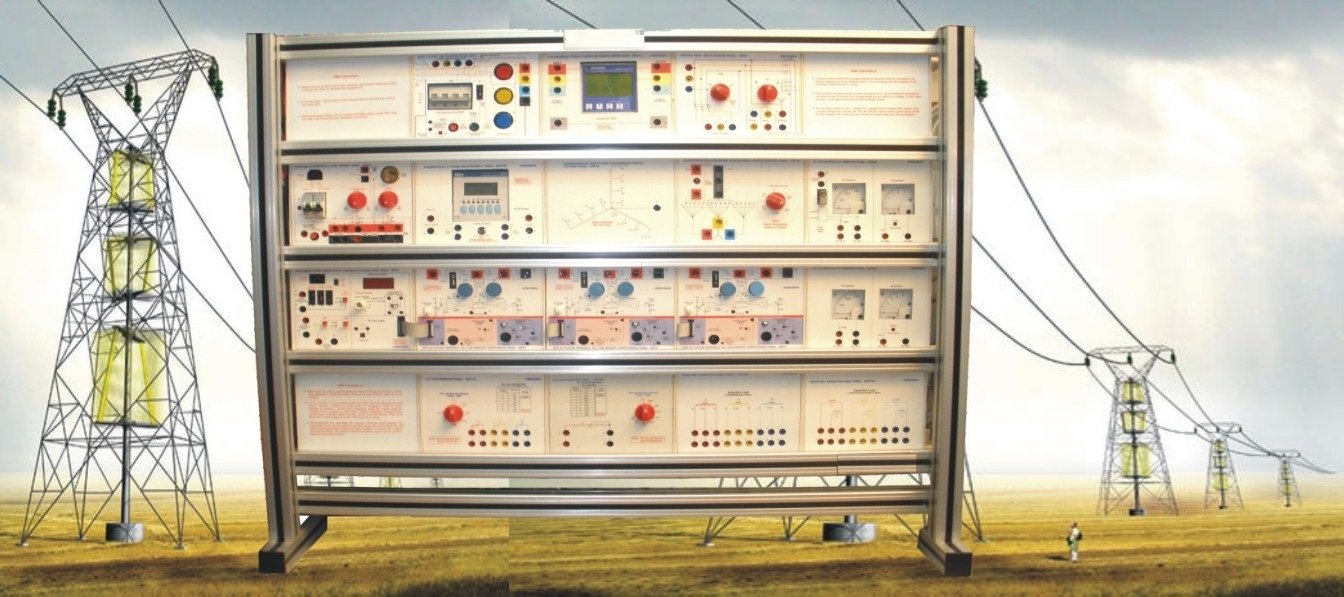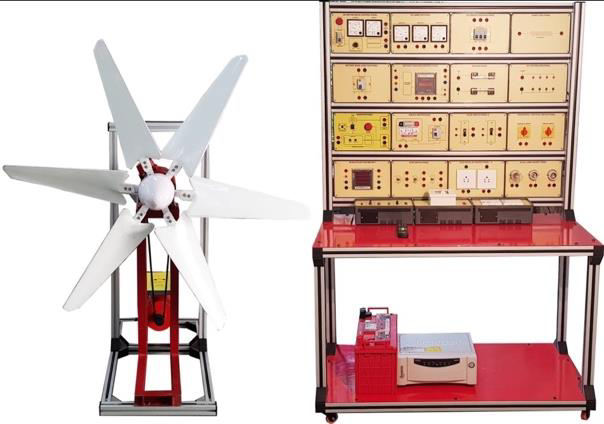Power Transmission Line Trainer Model ELTR 025C
High-voltage networks are usually operated with voltages in the region of 110 kV to 380 kV, whereby urban areas and large-scale industrial facilities are supplied with 110 kV, and 380 kV is used for long-distance transmission lines. The line simulation system is designed for operation at model voltages between 110 V and 380 V. Various voltage levels and line lengths can be selected via corresponding overlay masks.
Examinations with the training system can be performed off-load, in normal operating mode, in the presence of a short-circuit or earth fault, with or without earth-fault compensation. The system also permits assembly of complex networks by connecting the line simulation models in parallel or series. The voltage can be supplied via a fixed grid or synchronous generator.
High-voltage lines
Advantages
• For your safety, the 380-kV transmission lines are investigated and connected at a low-voltage level without detracting from the characteristics of a real high-voltage line.
• Realistic simulation of a 380-kV transmission line with a length of 300 km or 150 km
• Innovative switchover between line lengths by means of over- lay masks
• Earth-fault compensation by means of a Petersen coil
• Ability to simulate symmetric and asymmetric faults









